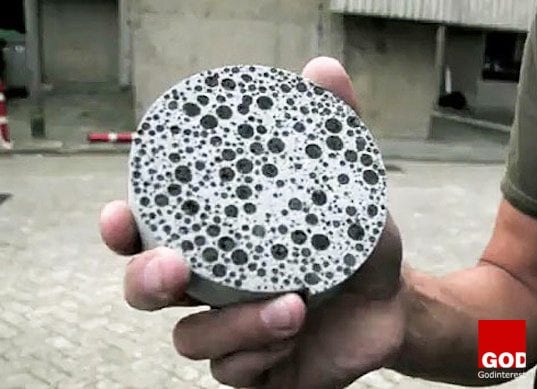Concrete has got a bad rap over the years but bacteria may provide an answer.
What happens when you introduce green technology which embeds self-activating bacteria into concrete? It becomes self-healing and three UK universities are actively working towards bringing this science to life.

Engineers are now looking to God’s creation for innovative ideas in architecture. Self-healing concrete brings together two fields: civil engineering and marine biology. With no knowledge of microbiology, a civil engineer read about applying limestone-producing bacteria to monuments and asked whether it could be used for buildings? The task then became to find the right bacteria that could not only survive being mixed into concrete, but actively start a self-healing process.
As soon as water seeps into a crack, the bacteria quickly burst out of their cases and produces limestone, sealing the gap before it can widen and become a pothole.
Scientists Believe the Technique Could Vastly Increase the Life of Concrete, Remove the Need for Repairs, and Reduce Costs by up to 50%.
Water is both the problem and the catalyst that activates the solution. Bacteria are mixed and distributed evenly throughout the concrete, but can lie dormant for up to 200 years as long as there is food in the form of particles. It is only with the arrival of concrete’s enemy, rainwater or atmospheric moisture seeping into cracks, that the bacteria starts to produce the limestone that eventually repairs the cracks. It’s a similar process to that carried out by osteoblast cells in our body which makes bones.
Healing these cracks the old-fashioned way is no small expense.
It Is Estimated That Around £40 Billion a Year Is Spent in the Uk on the Repair and Maintenance of Structures, the Majority of Which Are Made from Concrete.
The project is piloting three separate concrete-healing technologies for the first time in real-world settings, with a view to incorporating them into a single system that could be used to automatically repair concrete in the built environment.
The first technique uses shape-shifting materials, known as shape-memory polymers, to repair large cracks in concrete. When these materials are heated with a small current, they can transform into a different shape which the material has ‘memorised’. The researchers believe these materials can be embedded into concrete and used to close cracks or make them smaller.
In the second technique, researchers will pump both organic and inorganic healing agents through a network of thin tunnels into the concrete to help repair the damage.
In the third technique, the team will embed tiny capsules, or lightweight aggregates, containing both bacteria and healing agents in the concrete. It is anticipated that once cracks occur, these capsules will discharge, and in the case of the bacteria, the nutrients will enable them to function and produce calcium carbonate, which the researchers envisage will heal the cracks.
The overall aim of the project is to develop a single system that can be embedded into concrete when it is initially set, and then automatically sense when damage occurs. Once the damage is detected, the system will be able to repair itself autonomously without the need for human intervention.
Self-healing concrete is an amazing invention, based on God’s designs. The possibilities are unlimited for those who expect to find intelligent design throughout the created world!











